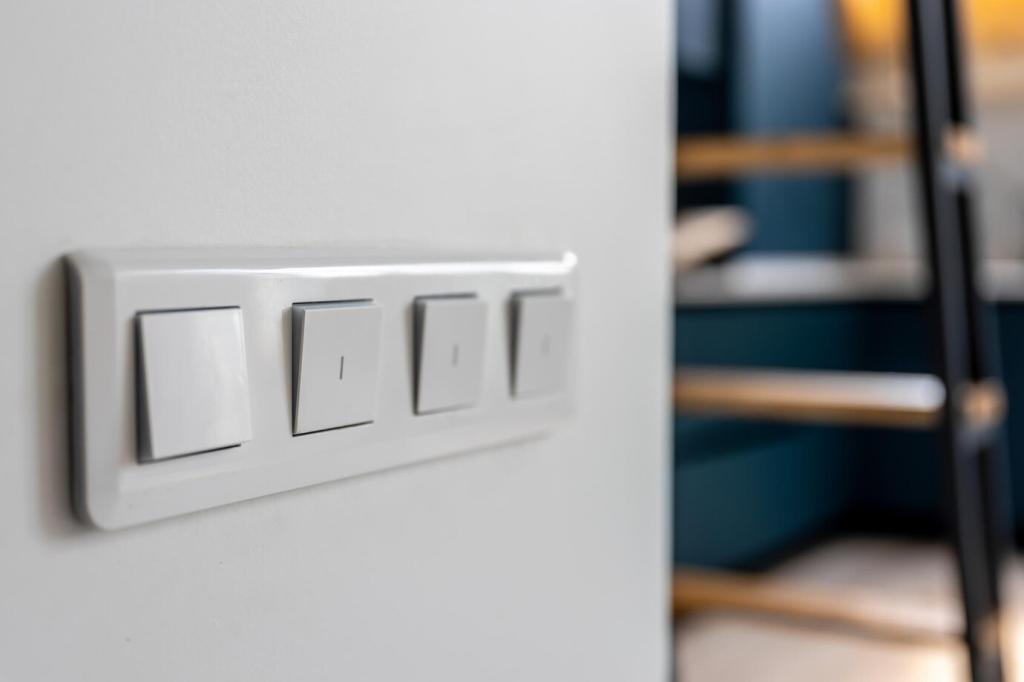
Intelligent HVAC Systems for Reduced Consumption
Chosen theme: Intelligent HVAC Systems for Reduced Consumption. Explore how sensor-rich controls, adaptive algorithms, and thoughtful design strategies minimize energy use while protecting comfort and air quality. Share your building’s story, ask questions in the comments, and subscribe for practical, field-tested insights and inspiration.
Why Intelligent HVAC Matters Now
Occupancy, CO2, humidity, volatile organic compounds, and weather forecasts become actionable when stitched into one coherent picture. Intelligent HVAC systems use this data to ventilate only when needed, precondition spaces before arrival, and avoid overcooling. Share which sensors you already have, and we’ll help you prioritize the next additions.


Why Intelligent HVAC Matters Now
From rule-based logic to model predictive control, adaptive algorithms anticipate loads, widen deadbands without discomfort, and coordinate equipment. The result is fewer starts, gentler ramps, and quieter rooms. If your spaces swing hot to cold, comment with details; our next guide can unpack targeted tuning strategies.
Anatomy of a Smart, Low-Consumption Stack
Temperature, humidity, CO2, particulate matter, and power meters form the nervous system of intelligent HVAC systems for reduced consumption. Accurate placement and calibration matter more than spec-sheet hype. Start with CO2 for ventilation, then add submeters to expose hidden baseloads. What data gaps are holding you back?

Zoning and Demand-Controlled Ventilation
Intelligent HVAC systems for reduced consumption rely on zoning that aligns with real occupancy patterns. CO2-driven ventilation scales fresh air exactly when people arrive, not before. This approach preserves indoor air quality while cutting fan energy. Tell us about your floor plan and we’ll propose a zoning sketch.

Smart Setpoints and Deadbands
Small changes save big: widen deadbands during mild weather, float setpoints when spaces are empty, and pre-cool before peak tariffs. Intelligent HVAC systems automate these tactics to curb peaks gracefully. Curious how far you can push without complaints? Share your climate and occupancy hours for tailored guidance.

Envelope First, Right-Sized Equipment
Improving insulation, sealing leaks, and shading glass can reduce loads enough to downsize equipment or extend its life. Intelligent HVAC systems then run at sweeter efficiency points. Considering a retrofit? Post your building age and typical issues; we’ll outline envelope moves with solid paybacks.
Installation and Commissioning That Stick
Commissioning Checklist, With a Hotel Lesson
A boutique hotel struggled with muggy rooms despite new equipment. During commissioning, a return damper was found stuck half-closed. Fixing it restored pressure balance and cut reheat energy by a double-digit percentage. Intelligent HVAC systems need these basic verifications. Share your hardest commissioning surprise; we’ll feature solutions.

Model Predictive Control in Practice
A grocery chain used model predictive control to pre-cool refrigerated zones before afternoon peaks, then coasted through expensive hours. Intelligent HVAC systems coordinated with store occupancy and weather forecasts, trimming demand charges while stabilizing temperatures. Interested in MPC? Ask for our starter playbook in the comments.
Predictive Maintenance Before Failures
Bearing vibration and motor current signatures can forecast fan issues weeks early. Intelligent HVAC systems surface these anomalies with clear next steps, avoiding emergency calls and wasted energy. Which faults hit you hardest—valve leakage, fouled coils, or short cycling? Share, and we’ll dedicate a troubleshooting post.
Engaging Occupants, Nudging Savings
Dashboards and gentle prompts empower occupants to report drafts, close blinds, or adjust schedules without battles. Intelligent HVAC systems translate feedback into safe, reversible tweaks. What engagement tools have worked for you—kiosks, emails, or mobile apps? Comment your approach and we’ll compile best practices.

Establishing a Baseline, the Right Way
Normalize historical energy use for weather and occupancy to create a credible baseline. Then compare post-upgrade performance over matching periods. Intelligent HVAC systems make this transparent with trend data and change logs. Post your building size and climate zone, and we’ll suggest baseline tips suited to you.
Dashboards That Drive Action
Great dashboards prioritize a few metrics: energy use intensity, peak demand, indoor CO2, humidity, and comfort complaints. Intelligent HVAC systems surface outliers and recommended fixes. Share a screenshot or description of your dashboard, and we’ll offer ideas to turn it from pretty to actionable.
Report, Celebrate, and Learn Together
Publish results to staff and tenants—kilowatt-hours saved, emissions avoided, and comfort improvements. Recognition sustains momentum and invites new ideas. Intelligent HVAC systems provide the evidence; you provide the story. Tell us your latest win or sticking point, and we’ll spotlight it in a subscriber roundup.
